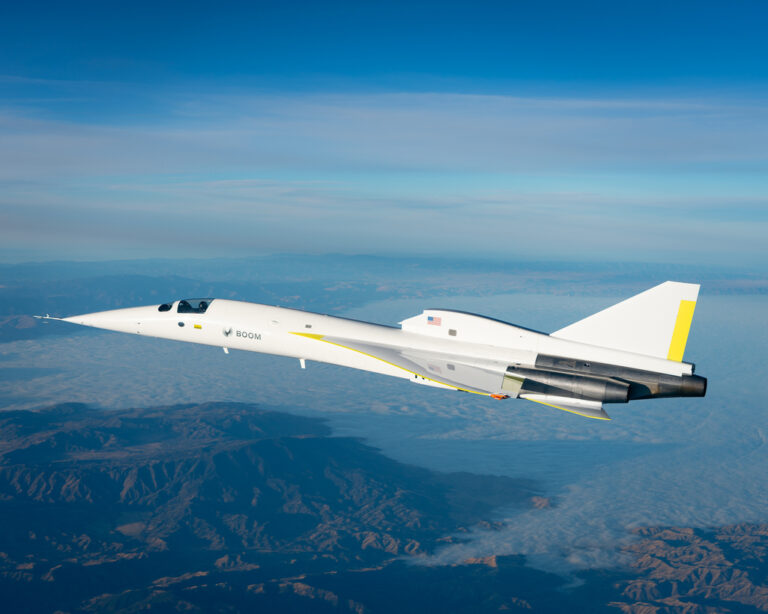 Boom Supersonic is on the brink of redefining air travel with its groundbreaking boomless supersonic flight technology, promising to bring back faster-than-sound commercial aviation without the disruptive noise pollution. This breakthrough marks a major milestone in the future of sustainable and quiet supersonic travel, paving the way for a new era of high-speed flight.
Boom Supersonic is on the brink of redefining air travel with its groundbreaking boomless supersonic flight technology, promising to bring back faster-than-sound commercial aviation without the disruptive noise pollution. This breakthrough marks a major milestone in the future of sustainable and quiet supersonic travel, paving the way for a new era of high-speed flight.
For decades, the dream of commercial supersonic flight has been overshadowed by one major issue: the sonic boom. When an aircraft surpasses the speed of sound (Mach 1), it creates shockwaves that result in a loud, disruptive boom heard on the ground. This noise pollution led to the banning of overland supersonic flights in many countries, ultimately contributing to the demise of the Concorde.
However, Boom Supersonic, an aerospace company developing the world’s fastest passenger aircraft, has unveiled a revolutionary technology that eliminates the traditional sonic boom. This innovation, dubbed the boomless supersonic breakthrough, could enable high-speed air travel over land without the restrictions that grounded previous supersonic aircraft.
Boom’s Overture, the company’s flagship aircraft, is being designed with an advanced aerodynamic structure and proprietary noise-reduction technology that diffuses the shockwaves before they reach the ground. This means passengers can experience speeds of Mach 1.7—cutting flight times in half—while those below hear nothing unusual.
The key to Boom Supersonic’s breakthrough lies in a combination of cutting-edge aerodynamics and innovative shockwave management:
Shaped Sonic Signature – Unlike traditional supersonic jets, Overture’s design ensures that shockwaves disperse gradually rather than forming an explosive boom. By carefully shaping the aircraft’s nose and fuselage, Boom engineers have significantly reduced the sharp pressure changes responsible for loud sonic booms.
Cruising Altitude Optimization – Overture will fly at approximately 60,000 feet, much higher than conventional commercial aircraft. At this altitude, the air pressure is lower, which helps dissipate shockwaves before they reach the surface.
Noise-Reducing Propulsion System – Boom has partnered with leading aerospace firms to develop advanced engines that minimize jet noise, both at takeoff and during supersonic cruising. The engines will operate without the use of afterburners, making them far quieter than the Concorde’s powerful but noisy Rolls-Royce/Snecma Olympus 593 engines.
Sonic Boom Mitigation via Flight Path Adjustments – By utilizing real-time atmospheric data and advanced flight trajectory software, Overture can adjust its route to ensure that any remaining sound waves disperse harmlessly over unpopulated areas like oceans or deserts.
Boom Supersonic’s boomless technology has the potential to revolutionize long-haul travel. With Overture’s expected cruise speed of Mach 1.7, transatlantic flights could take less than four hours instead of the usual eight. A flight from New York to London could be completed in about 3.5 hours, while routes such as Los Angeles to Tokyo could be reduced to six hours.
Major airlines, including United Airlines and American Airlines, have already placed orders for Overture jets, signaling strong industry confidence in Boom’s vision. Additionally, the U.S. Air Force is exploring potential military applications for the technology, which could allow for faster, quieter, and more efficient troop and equipment transport.
Beyond speed and noise reduction, Boom Supersonic is also prioritizing sustainability. Overture is being designed to run entirely on 100% sustainable aviation fuel (SAF), significantly reducing its environmental impact. The company has committed to achieving net-zero carbon emissions, making it one of the most eco-friendly high-speed aircraft ever developed.
Regulatory and Industry Challenges
Despite its promising advancements, Boom Supersonic still faces regulatory hurdles. Current aviation laws prohibit supersonic travel over land in many countries due to noise concerns. However, with advancements in boomless technology, Boom is actively working with regulators, including the Federal Aviation Administration (FAA) and the International Civil Aviation Organization (ICAO), to update policies that reflect modern innovations.
Additionally, the aerospace industry is closely watching Boom’s progress to see if it can overcome the technical and financial challenges that led to the downfall of Concorde. The success of Overture will depend on continued investment, rigorous testing, and approval from global aviation authorities.
Boom Supersonic’s boomless breakthrough could mark the beginning of a new era in aviation. If successful, it will not only bring back commercial supersonic travel but also make it more accessible, sustainable, and practical for both passengers and airlines.
With Overture expected to take its first flight in 2027 and enter commercial service by the early 2030s, the dream of flying faster than sound without the disruptive noise could soon become a reality. The sky is no longer the limit; supersonic travel is set to make a quiet and powerful comeback.

